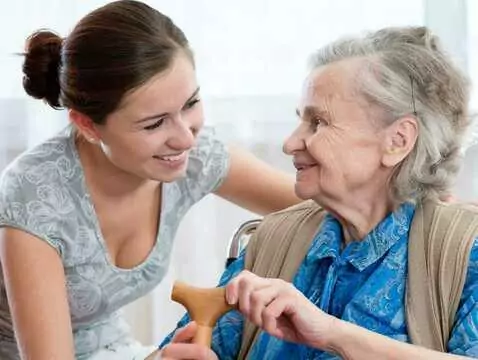Rozpoznanie ch.P. jest rozpoznaniem klinicznym. Kryteria stworzone przez Bank Mózgu Brytyjskiego Towarzystwa Choroby Parkinsona (ang.United Kingdom Parkinson’s Disease Society Brain Bank) pozwalają na rozpoznanie tego schorzenia przy obecności spowolnienia ruchowego (bradykinezy) oraz przynajmniej jednego z trzech następujących objawów: sztywności mięśniowej, drżenia spoczynkowego oraz zaburzeń stabilności postawy nie spowodowanych uszkodzeniem narządu wzroku, błędnika lub móżdżku czy też zaburzeniami czucia głębokiego.
Piśmiennictwo:
- de Rijk MC, Launer LJ, Berger K et al. Prevalence of Parkinson’s disease in Europe: A collaborative study of population-based cohorts. Neurologic Diseases in the Elderly Research Group. Neurology 2000; 54 (Suppl 5):S21-S23.
- Koller WC, O’Hara R, Weiner W et al. Relationship of aging to Parkinson’s disease. Adv Neurol 1987; 45:317-321.
- Twelves D, Perkins KS, Counsell C. Systematic review of incidence studies of Parkinson’s disease. Mov Disord 2003;18:19-31.
- Marioka S, Sakata K, Yoshida S et al. Incidence of Parkinson’s disease in Wakayama, Japan. J Epidemiol 2002;12:403-407.
- Friedman A. Epidemiologia. [W:] Friedman A, red. Choroba Parkinsona, mechanizmy, rozpoznawanie, leczenie. Lublin: Wydawnictwo Czelej; 2005, str.1-5.
- Braak H, Ghebremedhin E, Rüb U, Bratzke H, Del Tredici K. Stages in the development of Parkinson's disease-related pathology. Cell Tissue Res 2004; 318:121-134.
- Braak H, Del Tredici K, Rüb U, de Vos RA, Jansen –Steur EN, Braak E. Staging of brain pathology related to sporadic Parkinson’s disease. Neurobiol Ageing 2003;24:197-211.
- Eriksen JL, Wszołek Z, Petrucelli L. Molecular pathogenesis of Parkinson’s Disease. Arch Neurol 2005;62:353-357.
- Dawson TM, Dawson VL. Rare genetic mutations shed light on the pathogenesis of Parkinson disease. J Clin Invest 2003;111:145-151.
- McNaught KS, Perl DP, Brownell AL, Olanow CW. Systemic exposure to proteasome inhibitors causes a progressive model of Parkinson’s disease. Ann Neurol 2004;56: 149-162.
- Shen J, Cookson MR. Mitochondria and dopamine: new insights into recessive parkinsonism. Neuron 2004; 43:301-304.
- Kłodowska –Duda G, Jasińska-Myga B, Safranow K, Boczarska-Jedynak M, Opala G. Wpływ czynników środowiskowych może zależeć od wieku zachorowania na chorobę Parkinsona. Neurol Neurochir Pol 2006; 39:445-450.
- Litvan I, Bhatia KP, Burn DJ et al. Movement Disorders Society Scientific Issues Committeereport: SIC Task Force appraisal of clinical diagnosis criteria for Parkinsonian disorders. Mov Disord 2003;18:467-486.
- Campos-Sousa RN, Quagliato E, da Silva BB, de Carvahlo RM Jr, Ribeiro SC, de Carvalho DF. Urinary symptoms in Parkinson’s disease prevalence and associated factors. Arq Neuropsiquiatr 2003; 61:359-363.
- Allocock LM, Ullyart K, Kenny RA, Burn DJ. Frequency of orthostatic hypotension in a community based cohort of patients with Parkinson’s disease. J Neurol Neurosurg Psychiatry 2004;75:1470-1471.
- Bassotti G, Maggio D, Battaglia E et al. Manometric investigation of anorectal function in early and late stage Parkinson's disease. J Neurol Psychiatry 2000; 68:768-770.
- Leopold NA, Kagel MC. Pharyngo-esophageal dysphagia in Parkinson’s disease. Dysphagia 1997;12:11-20.
- Double KL, Rowe DB, Hayes M et al. Identifying the pattern of olfactory deficits in Parkinson’s disease using the brief smell identification test. Arch Neurol 2003;60:545-549.
- Poewe W. Psychosis in Parkinson’s disease. Mov Disord 2003;18(Suppl 6):S80-S87.
- Slaughter JR, Slaughter KA, Nichols D, Holmes SE, Martens MP. Prevalence, clinical manifestations, etiology, and treatment of depression in Parkinson's disease. J Neuropsychiatry Clin Neurosci 2001;13:187-196.
- Ponsen MM, Stoffers D, Booji J, van Eck-Smit BLF, Wolters EC, Berendse HW. Idiopathic hyposmia as a preclinical sign of Parkinson’s disease. Ann Neurol 2004;56:173-181.
- Nilsson FM, Kessing LV, Bolwig TG. Increased risk of developing Parkinson’s disease for patients with major affective disorder : a register study. Acta Psychiatr Scand 2001;104:380-386.
- Leentjens AF, Van Den Akker M, Metsemakers JF, Lousberg R, Verhey FR. Higher incidence of depression preceding the onset of Parkinson's disease: a register study. Mov Disord 2003;18: 414-418.
- Boeve BF, Silber MH, Ferman TJ, Lucas JA, Parisi JE. Association of REM sleep behavior disorder and neurodegenerative disease may reflect an underlying synucleinopathy. Mov Disord 2001;16:622-630.
- Abott RD, Ross W, White LR et al. Environmental, life-style, and physical precursors of clinical Parkinson’s disease: recent findings from the Honolulu-Asia Aging Study. J Neurol 2003; 250(Suppl 3):301-309.
- Potulska A, Friedman A, Królicki L, Spychała A. Swallowing disorders in Parkinson’s disease. Parkinsonism Rel Disord 2003;9:349-353.
- Abott RD, Ross GW, White LR et al. Excessive daytime sleepiness and the future risk of Parkinson’s disease (abstract). Mov Disord 2005; 20 (Suppl 10): S101.
- The Parkinson Study Group. Levodopa and the progression of Parkinson’s disease. N Engl J Med 2004; 351:2498-2508.
- Calabresi P, Giacomini P, Centonze D, Bernardi G. Levodopa-induced dyskinesia: a pathological form of striatal synaptic plasticity? Ann Neurol 2000; 47(Suppl 1):S60-S69.
- Friedman A. Old-onset Parkinson’s disease compared with young-onset disease: clinical differences and similarities. Acta Neurol Scand 1994;89:258-261.
- Friedman A. Levodopa-induced dyskinesia: clinical observations. J Neurol 1985;232:29-31.
- Rinne UK, Larsen JP, Siden A, Worm-Petersen J. Entacapone enhances the response to levodopa in parkinsonian patients with motor fluctuations. Nomecomt Study Group. Neurology 1998;51:1309-1314.
- Miyasaki JM, Martin W, Suchowersky O, Weiner WJ, Lang AE. Practice parameter: Initiation of treatment for Parkinson’s disease: an evidence-based review. Report of the Quality Standards Subcommittee of the American Academy of Neurology. Neurology 2002;58:11-17.
- Parkinson Study Group. A randomized placebo-controlled trial of rasagiline in Levodopa-treated patients with Parkinson’s disease and motor fluctuations: the PRESTO Study. Arch Neurol 2005;62:241-48.
- The Parkinson Study Group. Pramipexole vs levodopa as initial treatment for Parkinson disease. A 4-year randomized controlled trial. Arch Neurol 2004;61:1044-1053.
- Inzelberg R, Schechtman E, Nisipeanu P. Cabergoline, pramipexole and ropinirole used as monotherapy in early Parkinson’s disease: an evidence-based comparison. Drugs Aging 2003;20:847-855.
- Baseman DG, O’Suilleabhain PE, Reimold SC, Laskar SR, Baseman JG, Dewey RB Jr. Pergolide use in Parkinson’s disease is associated with cardiac valve regurgitation. Neurology 2004;63:301-304.
- The Parkinson Study Group. A controlled trial of rotigotine monotherapy in early Parkinson’s disease. Arch Neurol 2003;60:1721-1728.









